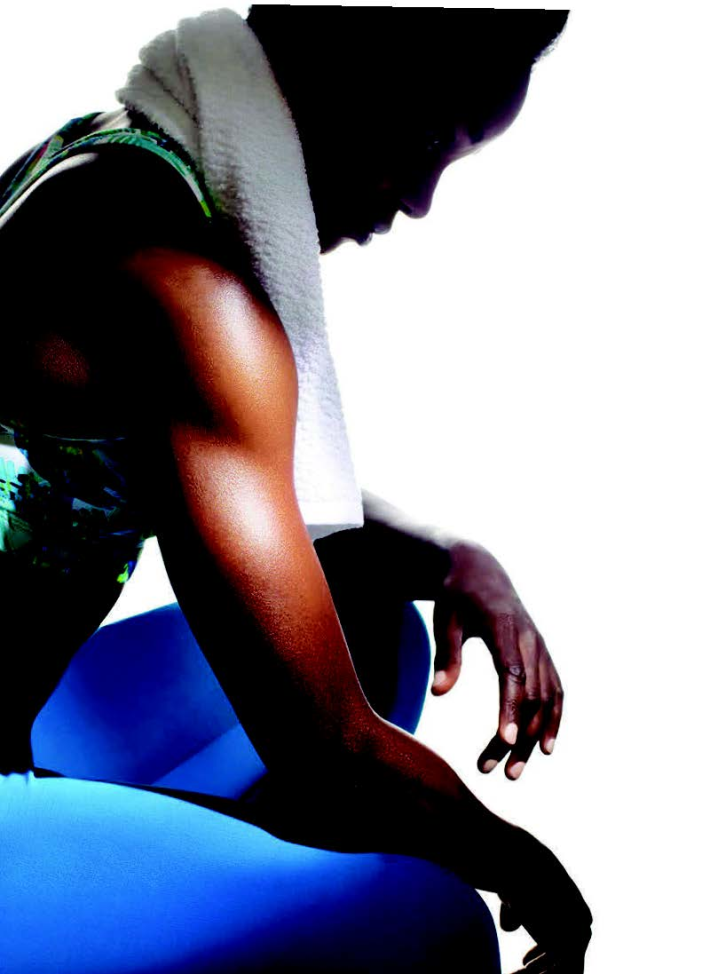New research says yes. Learn how your workout can reverse ageing and double as your most potent beauty treatment.


New research says yes. Learn how your workout can reverse ageing and double as your most potent beauty treatment.

Though it sounds too good to be true, exercise not only keeps your skin youthful but also helps it de-age— and now we know why. As you work out, your muscles release all sorts of proteins to start the domino effect of your body’s response to exercise. Researchers at McMaster University in Ontario took a close look at those proteins and were able to pinpoint one in particular, IL-15, that stimulates skin cells’ power centers, or mitochondria. The pumped-up mitochondria in turn make skin cells perform better, whether they’re cranking out plumping collagen or triggering the cell turnover that renews your complexion.
In other words, IL-15 makes skin cells’ mitochondria fitter and healthier, and that makes skin look and act younger. Best of all, this priceless IL-15 youth potion is totally free: exercise is the only way to get it.
The magic of IL-15
The Canadian scientists first discovered the IL-15 effect in a remarkable study that was released earlier this year. Comparing the skin of older adults who did moderate-to-vigorous cardio four or more times per week to that of sedentary adults, they found that the exercisers’ skin looked 25 years younger; yes, 25 years. The key was that the exercisers had higher levels of IL-15 (IL is short for interleukin, a class of protein). Even more exciting, when the scientists put the sedentary seniors on a light cardio programme, the ageing of their skin was partially reversed. “After just three months, we saw a ‘youthening’—a thickening of the dermis [the under layer] and a thinning of the epidermis [the topmost layer],” says lead author Mark Tarnopolsky, M.D., Ph.D., a professor of pediatrics and medicine. (A thick dermal layer has lots of collagen, which gives skin a firm appearance, and a thinner top layer indicates that the epidermis is constantly being replenished with fresh skin cells.) “And the fact that we got these improvements means you can’t say the initial differences we observed in the original exercisers’ skin were just the result of good genes.”
What’s especially reassuring is that if you haven’t put in much exercise time in the past, you haven’t missed the boat for younger-looking skin. To be clear, the former couch potatoes in the study didn’t magically erase wrinkles by hitting the gym, but even Dr. Tarnopolsky was stunned at how little exercise it took for them to reap the skin benefits that could keep them from developing more signs of ageing. “These people didn’t have to do that much. They biked 30 to 45 minutes at a moderate pace twice a week, and on one other day, we asked them to go for a walk,” he says. “I thought the effect would take longer or require more intensity or duration per workout. But based on what we see, there’s no question that even a little exercise makes skin look younger.”

OTHER SKIN-DEEP PERKS
As you know, getting your heart thumping faster boosts your circulation. That means more nutrients and oxygen reach your skin cells, and your body more efficiently carries away the by-products of normal cell repair and turnover.“ Whenever you increase nutrition to cells, you also increase and improve cellular function,” says Mark Herron, M.D., a dermatologist in Alabama, the U.S., and a three-time Ironman competitor. “And if each cell is improved when you exercise, then you are further warding off the ageing process.”
Plus, at the same time your level of IL-15 is spiking, your muscles are releasing similar interleukins that stimulate the body’s immune system, which in turn can reduce wholebody inflammation. That’s a crucial function, because inflammation breaks down collagen and can thwart skin repair. “The term inflamm-ageing was created because inflammation is seen as a key driver of ageing,” says Frauke Neuser, Ph.D., the principal scientist for Olay Skin Care. “It can literally exhaust cells because they’re constantly responding to the inflammation. Their defense mechanisms kick in, which prevents them from focusing on the regular functions that keep skin strong and healthy.” In other words, exercise does the dirty work to lift the constant low-grade stress your skin cells could be under without your even knowing it.
THE IDEAL ANTI-AGEING WORKOUT
Any exercise has positive effects on skin, experts say, but research shows that only cardio, not resistance training, generates IL-15. The specific type – walking, jogging, cycling, swimming – doesn’t seem to matter. As the McMaster University study on seniors suggests, intensity may not be that important either. “I think there is a ceiling effect on how much IL-15 your skin cells can use, and we were close to it. The skin really looked much younger, and you cannot get younger than young,” Dr. Tarnopolsky says. And if you’re worried that pounding the pavement on runs stresses skin’s elasticity and causes sagging, don’t be. The small amount of g-force that the skin endures may actually help ward off wrinkles. “That little bit of intermittent stretch in skin could stimulate repair mechanisms and trigger collagen growth,” Dr. Tarnopolsky says. As for breasts, what leads to sagging is not high-impact exercise – a good sports bra can pretty much provide the necessary motion control to neutralise that stress – but the gradual loss of elasticity in their inner support system, namely fascia and Cooper’s ligaments. Bottom line: all you have to do is move. “When you see an older person and go, ‘Wow, you look so good,’ it’s probably one of two things,” Dr. Tarnopolsky says. “Either they’ve paid a lot of money for plastic surgery and collagen injections, or they exercise.”























